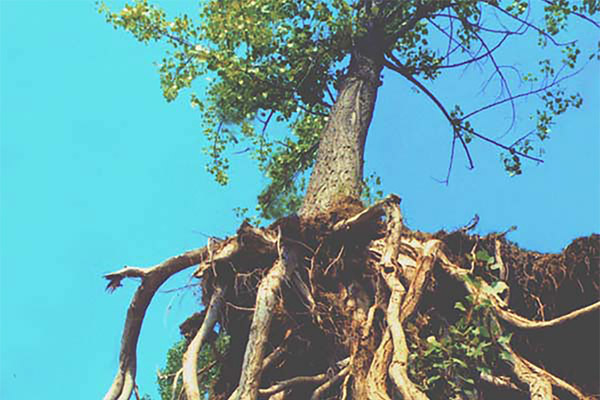
Tree Law, Fences and the Law v. the Neighbor’s Massive Tree
Unauthorized Cutting of Vegetation on Adjacent Property
A property owner who finds a neighbor’s tree encroaching must first warn or give notice to the tree owner prior to commencing work and give the tree owner the chance to correct the problem. If the tree owner does nothing, the tree can still be trimmed. As a general rule a property owner who trims an encroaching tree belonging to a neighbor can trim only up to the boundary line and must obtain permission to enter the tree owner’s property, unless the limbs threaten to cause imminent and grave harm. Additionally, the property owner cannot cut the entire tree down and cannot destroy the structural integrity or the cosmetic symmetry and appeal of a tree by improper trimming.
California Civil Code States as follows:
First, Who Owns The Tree.
Pursuant to California Civil Code Section 833, if the trunk of a tree stands wholly on the land of one landowner, that landowner owns the tree regardless of whether its roots, foliage, or branches have grown onto the land of another. However, if the trunk of a tree stands partly on the land of two adjoining landowner, then both landowners own the tree. (Civil Code Section 834).
Civil Code section 733 of the Code of Civil Procedure in relevant part provides: “Any person who cuts down …any wood or underwood, tree, or timber … on the land of another person, … is liable to the owner of such land … for treble the amount of damages which may be assessed therefor, in a civil action, in any court having jurisdiction.”
Civil Code section 3346 of the Civil Code, as it read at the time of the trespass here involved, provided in relevant part as follows: “For wrongful injuries to timber, trees, or underwood upon the land of another, or removal thereof, the measure of damages is three times such a sum as would compensate for the actual detriment, except where the trespass was casual and involuntary, or committed under the belief that the land belonged to the trespasser.”
A California Court ruled that a neighbor no longer has the absolute right to cut encroaching roots and branches back to stubs ending at his or her property line. The health of a tree must be taken into account. Booska v Patel, 24 Cal.App.4th 1786. Thus a landowner’s right to remove the portions of a tree that encroach on his or her land must be balanced against the obligations to act reasonably toward adjoining landowners and to refrain from causing foreseeable injury to neighboring property.
My Neighbor Cut Down My Tree – Damages.
Chopping down, or killing, your neighbor’s tree, even unintentionally, can lead to both criminal and civil damages. Pursuant to California Penal Code sections 384a and 622, it is a criminal offense to harm or remove a tree on someone else’s land punishable by a fine of up to $1,000 and up to six months in jail. In addition, California Civil Code section 3346 and California Code of Civil Procedure section 733 provide that the injured tree owner is entitled to a mandatory doubling (with certain exceptions), and at the discretion of the judge treble damages, for wrongful injury to trees or vegetation. In other words, if your neighbor even mistakenly cuts down your trees thinking the trees were on his or her property, the judge is required to award double the actual damages. In addition, the person or company that actually cut down the tree can also be held liable under various common law claims such as: negligence, trespass, conversion, intentional infliction of emotional distress and fraud.
Although the statute of limitations is a long five years, it is best to bring a case as soon as practically possible before evidence disappears and memories fade.
Fences
California Civil Code § 841 requires adjacent landowners equally contribute to maintain walls and fences between them, unless one of the two landowners chooses to let the remaining sides of his property remain unfenced. If that landowner later fences in his property, however, he will then be responsible for payment of his proportional share of the original value of the fence.
So what do you do if your neighbor doesn’t want to maintain a fence that is falling down? First try to reason with the neighbor. Good neighbors will agree on splitting the cost of the repair, especially if informed that they have a legal obligation to do so. If that fails send your neighbor a demand letter setting forth his legal obligation and the cost of the fence and attach a copy of an estimate you have acquired. If your neighbor still refuses to pay his proportional share, either contact an attorney or proceed to pay for the fence yourself and consider filing a claim in small claims court.
In Metropolitan Water District v. Campus Crusade for Christ (2005), the California Court of Appeal ruled that the amount of damages to be awarded to a landowner whose trees were destroyed was the diminution in value of the property caused by the tree trimming, not the replacement cost of the trees. This case, however, is presently pending appeal before the California Supreme Court.
Landowners should also note that the mere encroachment of tree roots onto your property does not give you the unfettered right to trim. To have the legal right to sever roots, the roots must be causing actual damage.
Who is Liable for Falling Trees?
Sometimes it’s the owner of the tree and sometimes it’s the adjacent landowner. Landowners have a duty to inspect their trees to determine if a tree is healthy or hazardous, and to remove branches and even an entire tree if it poses a hazard. If the tree owner was negligent or careless in that he failed to maintain his tree after warnings or visual signs of problems, then the tree owner is responsible for resulting damage. If the tree was well maintained and a storm or earthquake causes a tree to fall, then the courts will find the damage was from an act of God and the tree owner will not be held responsible, or liable, for the resultant damage.
Spite Fences.
In California, Civil Code Section 841.4 governs what has commonly become known as spite fences. Pursuant to Civil Code Section 841.4, a “fence or other structure in the nature of a fence unnecessarily exceeding 10 feet in height maliciously erected or maintained for the purpose of annoying the owner or occupant of adjoining property is a private nuisance.” Pursuant to California law, trees and hedges planted in a row to form a barrier may be deemed a fence. See, Wilson v. Handley, 97 Cal.App.3d 1301 (2002), where the Appellate Court ruled that a row of trees planted in the nature of a fence along the property line does constitute a “structure” under California Civil Code Section 841.4, could be deemed a spite fence and hence illegal.
If an adjoining landowner erects such a fence, the injured neighbor can sue for an injunction, reduction of the height, or removal of the fence.
Leaves, Fallen Fruit and Sap.
Another area of contention is tree debris: leaves, fallen fruit, and sap. Generally, the natural growth of trees includes shade, invading roots, and leaves that blow in the wind and as such while a neighbor may have a limited right as discussed above to “reasonably” trim encroaching branches and foliage, the neighbor does not have the right to insist that the owner of the tree take responsibility for the natural growth and resulting debris of his tree so long as his tree is reasonably maintained.
Conclusion.
Despite all the law we return to the phrase “Good fences make good neighbors.” Before starting a legal battle that could turn out to be very costly, consider informing your neighbor of the law and making a reasonable accommodation. If two parties each give a little, compromise should successfully resolve the matter. Who are we kidding, if everyone was reasonable, there would be no attorneys and in California there are a lot of them. If reason fails, consider consulting with an attorney regarding your options as soon as practically possible. Typically a letter should be sent, and if that fails, then a lawsuit may need to be filed.
If you have additional questions regarding California law on trees, fences, and boundary lines and would like the assistance of a licensed California real estate attorney, call the Law Office of Lewis & Lewis, APC.

